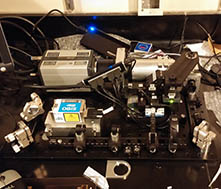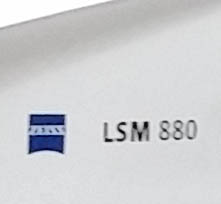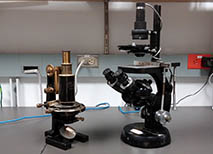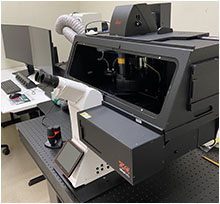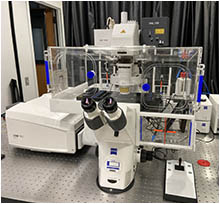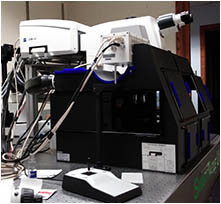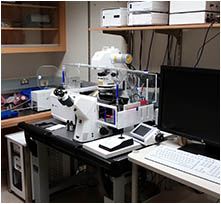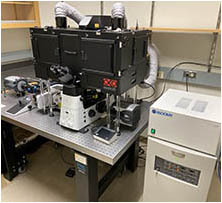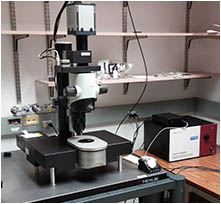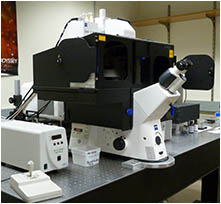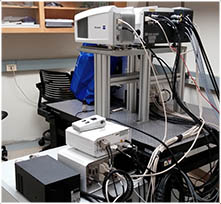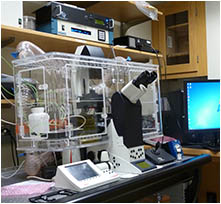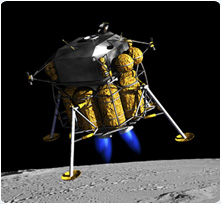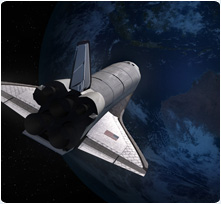Microscopes
Light Microscopy Resources for the Caltech Community During FY 2019, the Biological Imaging Facility (BIF) had 171 users from 57 Caltech Laboratories across 5 divisions (BBE, CCE, EAS, PMA, GPS). The BIF has 10 microscopes available for Caltech scientists though outside users are welcome to utilize our instruments for their research with the approval of the BIF Director. The BIF has 7 confocal microscopes, 2 Light Sheet Fluorescence Microscopes (LSFM, also called selective/single plane illumination microscope, SPIM) and 1 high end wide field fluorescent microscope for deconvolution. Of the 7 confocal microscopes, 6 are laser scanning microscopes (LSMs) while the 7th (a Nikon) uses a Yokogawa spinning disc to optically section samples. The two newest instruments are the latest high end laser scanning confocal microscopes from Zeiss (LSM 980) and Leica (STELLARIS 8 FALCON). Besides providing instruments for advanced imaging applications, the microscopes in the BIF are also available for basic light microscopy applications for those laboratories on the Caltech campus without such resources. The ability to provide advanced fluorescence techniques as well as basic light microscopy resources makes the BIF uniquely positioned to serve a broad swathe of users both within and outside of Caltech. Here are brief summaries of each instrument:
- Zeiss LSM 710 (Rm B133A). Inverted microscope. Spectral Detector. Two non-descanned detectors (NDDs) for highest sensitivity. IncubatorA for live cell imaging. Two photon laser for deeper tissue imaging. Motorized X-Y stage for tiling.
- Zeiss LSM 880 with Fast Airyscan (Rm B133B). Upright microscope. Spectral Detector. Two non-descanned detectors (NDDs) for highest sensitivity. IncubatorA for live cell imaging. Two photon laser for deeper tissue imaging. Motorized X-Y stage for tiling. CLARITY optics. The Airyscan module allows for super-resolution microscopy.
- Nikon Spinning Disc confocal with TIRF & STORM (Rm B133D). Inverted microscope. High speed. IncubatorA for live cell imaging. Confocal mainly from 63 to 100 X magnifications. The highest super-resolution microscopy with STORM.
- Zeiss LightSheet Z.1 Dual Side Illumination System with Dual PCO Detection Modules - 6 Lasers (Rm B133E). Samples typically mounted in agar inside capillary. High speed. IncubatorA for live imaging.
- Leica DMI 6000 (Rm B133F). Wide-field fluorescence microscope, not confocal. Inverted microscope. High speed. IncubatorA for live cell imaging. Motorized X-Y stage for tiling.
- Zeiss LSM 880 with Fast Airyscan (Rm B133G). Upright microscope. Spectral Detector. Motorized X-Y stage for tiling. Linkam Cryostage for confocal and cryoEM correlation. The Airyscan module allows for super-resolution microscopy.
- Zeiss LSM 800 W/3 Channel GaAsP Detection (Rm B133H). Inverted microscope. IncubatorA for live cell imaging. Motorized X-Y stage for tiling. The 3 GaAsP detectors and the efficient light path make this one of the most sensitive microscopes in the BIF.
- Leica STELLARIS 8 FALCON (Rm B131A). Inverted microscope. Spectral (Lambda) Imaging. White light laser (WLL) allows for a broad range of excitation wavelengths. Two photon laser for deeper tissue imaging. Resonant scanner for high speed. FALCON for fluorescence lifetime imaging microscopy (FLIM). Motorized X-Y stage for tiling.
- Zeiss LSM 980 with Fast Airyscan 2 (Rm B131). Inverted microscope. IncubatorA for live cell imaging. Motorized X-Y stage for tiling. The Airyscan module allows for super-resolution microscopy.
- La Vision Biotec Ultramicroscope II Light Sheet Microscope (Rm B111H). Upright macroscope (Olympus MVX10) with special CLARITY modified optics. The SuperK EXTREME EXW-12 white light laser (WLL) from NKT Photonics allows for a broad range of excitation wavelengths.
A Incubator controls
temperature and/or CO2. The LSM 800 and the Leica
STELLARIS 8 are also capable of regulating O2 levels.
More details on each of these microscopes is provided below on each instrument's individual web page. Below we list 12 microscopes of which 2 are coming soon to the BIF. We welcome all user input for how to improve the BIF and suggestions for future instrumentation.
Using the microscopes Please go to the Personnel tab above to contact us for training, advice or help with your microscopy. Training on a microscope typically takes from 1 to 2 hours and is provided free of charge for Caltech users. Training involves going over the policies for using the BIF as well as how to operate the microscope and software used to acquire your data. For training we provide the sample. Once you are trained you are free to use the microscopes with as little or as much supervision as you desire. Reservations for using a microscope are made with our Calendar software (see Calendar Link above).
Learn more about microscopy Use of the microscopes in the BIF requires no prior experience in microscopy. We provide all the necessary training for you to operate the microscope you are interested in using. Obviously the more you know about microscopy the more you can get out of our instruments. The Director of the BIF, Dr. Andres Collazo, offers lecture and laboratory classes on Microscopy (Bi/BE 177 and 227, winter term, class links below) for students, postdocs and staff here at Caltech. The picture at the top is of the light sheet microscope built by the students in Bi 227 (2016) based on the OpenSPIM design.
Microscopy Web Sites Nikon's
MicroscopyU
Olympus
Microscopy Resource Center
Zeiss Microscopy
Campus
Leica
Microscopy Knowledge Portal
Molecular Expressions:
Exploring the world of optics and microscopy
Hamamatsu education in
digital imaging
Please send any other websites you feel should be included here to
the webmaster, Dr. Andres Collazo.
Below we provide some lists of microscopes based on applications.
Fastest Zeiss Z.1 Light sheet
La Vision Biotec Ultramicroscope II Light Sheet
Leica STELLARIS 8 resonant scanner
LSM 980 Fast Airyscan
LSM 880 Fast Airyscan
Leica DMI 6000
Nikon Spinning Disc
Most sensitive Leica STELLARIS 8
Zeiss LSM 980
Zeiss LSM 880
Zeiss LSM 710 two photon only with NDD
Nikon Spinning disc with EMCCD
Highest Resolution Nikon STORM & TIRF
Zeiss LSM 980 Airyscan 2
Zeiss LSM 880 Airyscan
Leica STELLARIS 8 Lightning
Deltavision OMX 3 SIM
Least damaging to samples and fluorescence signal Zeiss Z.1
Light sheet
La Vision Biotec Ultramicroscope II Light Sheet
Leica DMI 6000
Zeiss LSM 800
Leica STELLARIS 8
Zeiss LSM 980
Zeiss LSM 880
Nikon Spinning Disc
Any two photon system
Spectral imaging Zeiss LSM 980
Zeiss LSM 880
Leica STELLARIS 8
Zeiss LSM 710
Zeiss LSM 800
Fluorescence recovery after photobleaching (FRAP) Zeiss LSM
980
Zeiss LSM 880
Leica STELLARIS 8
Zeiss LSM 710
Zeiss LSM 800
Two Photon / Multiphoton / Non Linear Optics capable systems
Zeiss LSM 880
Zeiss LSM 710
Leica STELLARIS 8 DIVE

